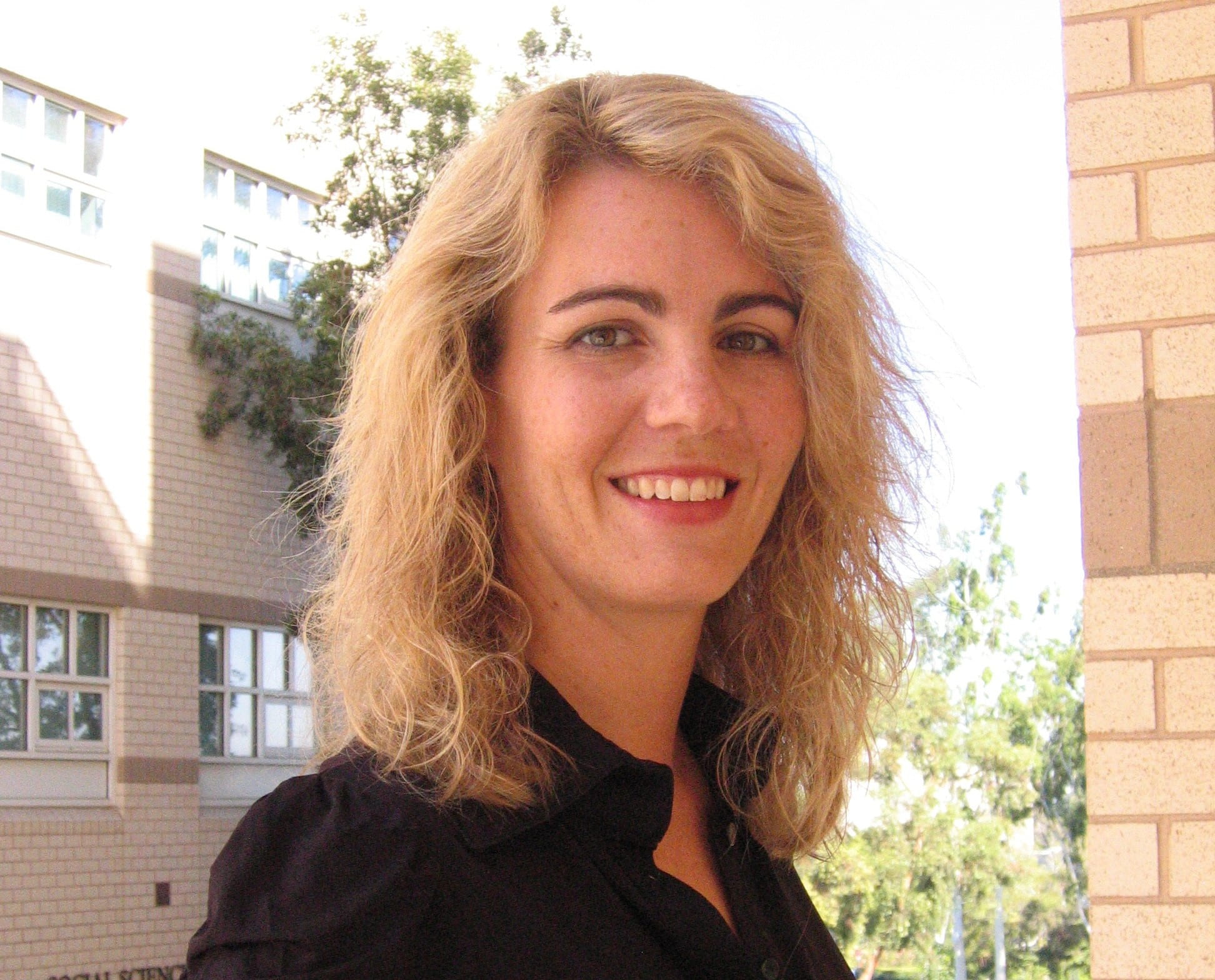UCI study sheds new light on low-light vision, could aid people with retinal deficits
Brain handles day- and nighttime optical signals the same, reacts quickly to loss of input

Irvine, Calif., May 11, 2015 – Driving down a dimly lit road at midnight can tax even those with 20/20 vision, but according to a recent UC Irvine study, the brain processes the experience no differently than if it were noon. The same study also reveals how quickly the brain adapts to vision loss, contradicting earlier research and opening the door to novel treatments.
The findings, which appear in the April 21 edition of Proceedings of the National Academy of Sciences, are significant for those who have suffered retinal damage or disease, said cognitive scientist Alyssa Brewer, the lead author.
“Previous research suggested that the two areas of the brain responsible for color processing received input only from cone photoreceptors – the parts of the retina used in central, normal daylight vision for things like reading and seeing details and colors in a scene,” she said.
However, Brewer and co-author Brian Barton, a postdoctoral researcher in cognitive sciences, employed functional MRI to determine that rod photoreceptors, which are only active under very low light, also play a role in the color experience and use the same neural pathways that cones do.
“This is surprising because there are no rods in the central part of the retina, the part we use to see fine details,” Brewer said. “We are functionally blind in the center of our vision under low light, something we call a ‘rod scotoma.’”
To compensate for this vision loss, people look at objects under low light at an angle that accesses the rod receptors.
This adaptation gives researchers an opportunity to track how the brain responds to what the eye sees without using central vision – similar to the way individuals with retinal damage interpret what they see.
Brewer and Barton had test subjects sit in a completely dark room for 30 minutes and then view checkerboard stimuli under very low light while their brain activity was measured with fMRI. In addition to the neural pathway finding, they discovered that the brain adapts immediately to required shifts in vision – a process previous work had said could take months.
“The amount and timing of the brain’s ability to reorganize to compensate for a loss of visual input is very important for us to understand what types of rehabilitation can help recovery,” Brewer said. “The temporary and reversible rod scotoma from low-light conditions provides an excellent way for us to study how the brain reacts and recovers from vision loss, something we found to be immediate rather than long-term.”
“By being able to accurately track how the brain responds to retinal damage, we can begin to create new rehabilitation techniques that could help restore vision,” she added.
The study is available online at http://www.pnas.org/content/early/2015/04/01/1423673112.full.pdf.
About the University of California, Irvine: Currently celebrating its 50th anniversary, UCI is the youngest member of the prestigious Association of American Universities. The campus has produced three Nobel laureates and is known for its academic achievement, premier research, innovation and anteater mascot. Led by Chancellor Howard Gillman, UCI has more than 30,000 students and offers 192 degree programs. It’s located in one of the world’s safest and most economically vibrant communities and is Orange County’s second-largest employer, contributing $4.8 billion annually to the local economy. For more on UCI, visit www.uci.edu.
Media access: Radio programs/stations may, for a fee, use an on-campus ISDN line to interview UC Irvine faculty and experts, subject to availability and university approval. For more UC Irvine news, visit wp.communications.uci.edu. Additional resources for journalists may be found at communications.uci.edu/for-journalists.